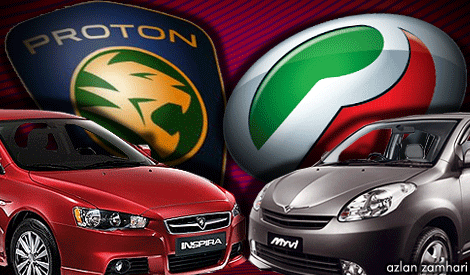The government has approved a RM1.5 billion soft loan to Proton which could help ease its cash problems. Given the large amount of public money involved, it is no surprise to see some conditions attached to the soft loan. In this case, the government needs to be cruel to be kind.
Proton is important to our automotive industry; especially in the pursuit of national agenda.
There’s no point for us to dwindle on the past but Proton needs to learn some lesson from its past experience. Also, it is not wrong for Proton to learn from Perodua, although they aren’t exactly an apple-to-apple comparison.
What is Perodua’s business plan that has so far made the company very successful? What didn’t Proton do?
Firstly, automotive industry is all about scale. Proton’s total productions were estimated at 30 percent of its full capacity, despite having two manufacturing plants running concurrently. Perodua on the other hand is currently operating at 70 percent of its full capacity, putting it in a better position to expand its market size through economies of scale.
For a relatively smaller company in the global context, Proton needs a foreign partner that will help with its research and development (R&D) and improve its scale of production. Actually, Proton started out in 1983 as a partnership with Mitsubishi. However, as Proton was profiting in the 90s (in fact reached its peak market share of 73 percent), they began to slowly reduce Mitsubishi’s equity.
While the people were rejoicing, Proton and their suppliers were facing problems with their quality, and not many experts were around to help them. Fast forward to 2016, Proton is solving fundamental quality problems that existed 15 years ago.
Perodua began a similar journey 10 years after Proton, through a partnership with Daihatsu. In 2001, Perodua strengthened their alliance with Daihatsu by maintaining their equity as the holding company and sales, but allowed Daihatsu to take a majority stake in its manufacturing plant. The results speak for themselves, within five years Perodua emerged as the bestselling model in Malaysia, commanding 32 percent of the market share.
Here’s where Proton went wrong - they kept telling themselves that doing things on their own was what kept it truly Malaysian. They removed the opportunity to learn from a more experienced company.
Secondly, Perodua isn’t troubled with legacy issues but the same cannot be said for Proton. In fact Proton is actually still paying the price of its previous mistakes.
For instance, it was reported that Proton has spent about RM4 billion to date to revitalise Lotus. This is a huge financial liability for the national carmaker and one wonder what benefit does it actually getting from this partnership.
Furthermore, Proton made a mistake by venturing into the Electric Vehicle (EV) project about five years ago. From the total of RM200 million worth of assistance committed, it was claimed that the government had provided about half of that amount, but Proton failed to achieve its deliverables. Proton’s ambitious of producing its first EV car by 2014 remains nowhere near completion.
Better market positioning
Thirdly, Perodua’s market positioning is better than Proton. They focused mainly on entry level cars with lower engine capacities. Their marketing was consistent, and their pricing structure was attractive to the relevant target segment.
Perodua Axia for example was introduced as Malaysia’s first Energy Efficient Vehicle (EEV). They didn’t bother with leather seats or surround sound speakers, but added safety as a bonus for their customers, a four-star Asean NCAP rating. The car had minimal quality issues, and came at a lowest price ever seen in Malaysia - a starting price of RM24,800!
Sales orders started coming way before the Axia was launched, and customers didn’t mind waiting six months. Why? Simply because it was too good a deal to miss.
Let’s contrast this to Proton’s market positioning, which to be honest, we’re still clueless what that is. There was a time when Proton had four models - Waja, Gen2, Persona and the Preve, competing in pretty much the same segment. They have tried to go cheap, with the Saga BLM, but even that didn’t work out as it came with a fuel consuming engine.
Notably, Proton may have made some mistakes in the past, but its future now lies in the new management team. Their business model needs a total revamp and Proton cannot depend on public funding forever.
Proton must swallow its pride and learn from a more successful model like Perodua.
There were talks some years ago that there could be a merger between Proton and Perodua. It doesn’t seem like a bad idea - a merger will improve their market share up to 50 percent and allow them to combine their expertise to produce better car models.
More importantly, all vendors will definitely be happier with the merger. Improved sales will mean more opportunities for them.
Who knows maybe, just maybe the merger could be the answer that will bring our national cars to their glory days?





